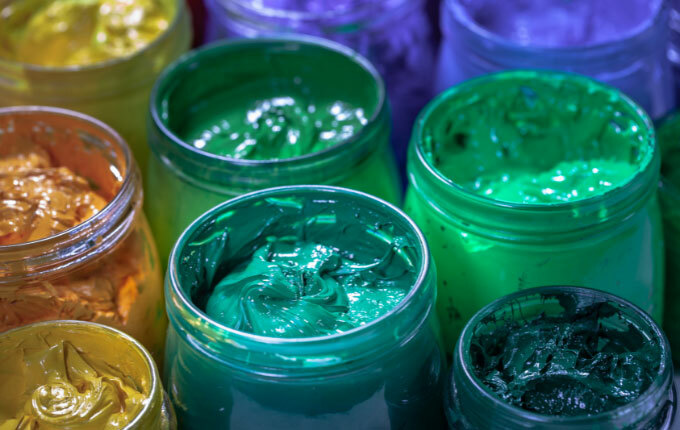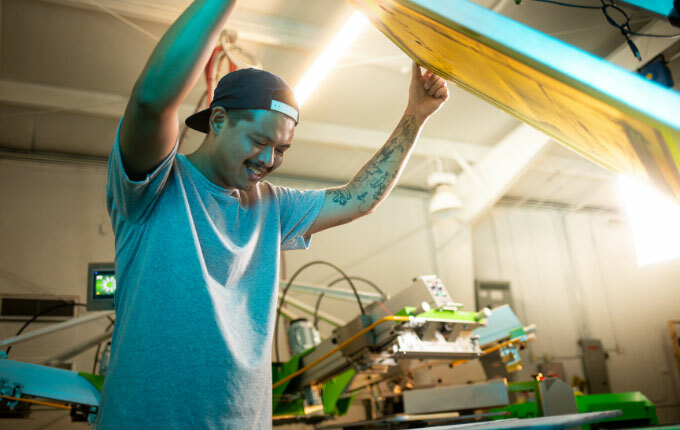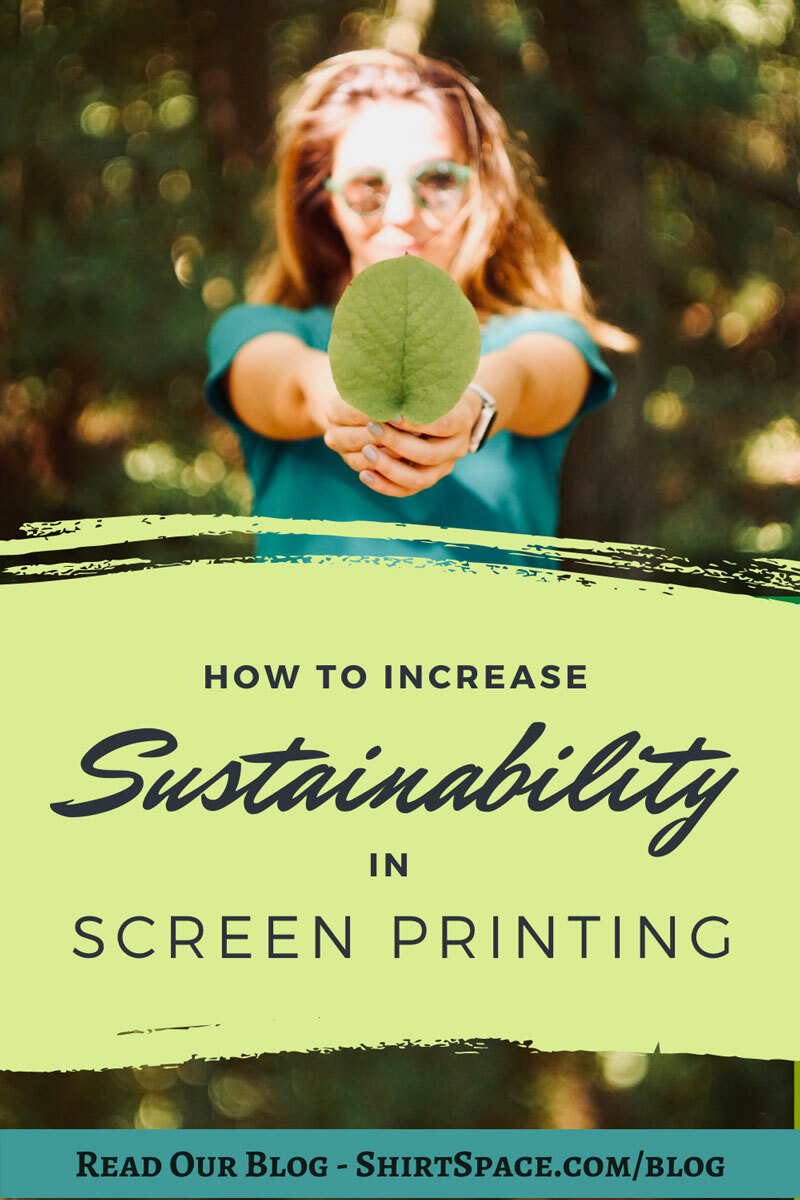
How to Increase Sustainability in Screen Printing
By ShirtSpace | Aug 23, 2019 | Updated May 25, 2023As we approach another new year, the interest in environmentally friendly business practices is not waning. Even still, there continues to be many hurdles that small and large businesses alike face when trying to make this shift. Specifically, those in the screen printing industry who attempt to improve sustainability are met with increased costs and many logistics to sort through. But, with a good dose of effort and unwavering commitment, sustainability in screen printing is worth the work.
Shop Setup & Supplies
Whether you’re a large-scale print shop or a one-man show, there are likely to be a handful of changes you can make to improve sustainability. Admittedly hard to do, switching to a chemical free environment would be the best way to go green.
A couple of ways to move in this direction would be to opt for water-based pallet adhesive versus aerosol cans, and choose soy and citrus-based eco-friendly products over their caustic cousins. Sure, grabbing an aerosol can of adhesive is convenient, but the trade-off is potentially inhaling adhesive particles, sticky overspray, and the environmental impact. Water-based pallet adhesive takes a bit more time to apply, but it’s more effective than a spray, and it’s eco-friendly too. Similarly, choosing soy, citrus, or iodine-based chemicals over harmful, non-green chemicals is another step in the right direction.
Supplies to Screen Print Sustainably
While on the topic of switching over to eco-friendly chemicals, it’s important to do a little homework and be mindful of product labels. As with any product, there are varying levels of quality, and if you’re going to spend the money, you want it to be on something that’s effective. Additionally, most manufacturers of eco-friendly products are forthcoming about their products, but if going green is your priority, keep an eye out for greenwashing. This is when a company promotes the perception that their products are environmentally friendly, but they’re not. Tsk, tsk.

Image credit: Thaisign
Water-based Ink
Hands down, one of the best ways to improve sustainability in screen printing is to switch from plastisol inks to water-based inks. Plastisol inks are most widely used, but water-based inks are growing in popularity and continually gaining traction. Though water-based inks are generally a bit more difficult to use, the benefits are worth tackling the learning curve.
Ink manufacturers have been working hard to improve the opacity of water-based inks, as the lack in opacity has been a major con. Additionally, the development of additives to reduce curing temperatures has given screen printers a greater ability to print on blank apparel that was previously off-limits. Phthalate-free and super-soft, water-based inks are absolutely something to consider on the quest to go green.
Disposal
Not to be a Debbie-downer, but the disposal of your chemicals and inks is a very important piece of the puzzle. Eco-friendly chemicals are green on their own, but mixing them with inks and other solvents and chemicals changes the composition. So, while using eco-friendly products is important, proper disposal is crucial.
Many screen printers have come up with creative ways to deal with chemical disposal. One of these includes lining their washout sink with extra mesh that acts as a filter for some of the waste that would otherwise go down the drain. Similarly, there are dedicated filtration systems for some washout sinks that tackle disposal head-on. Though these filtration systems typically cost a pretty penny, it is hard to put a price tag on the environmental impact that chemicals and waste have when going down the drain.
Something else to consider is looking for a chemical waste company in your area to come pick up and dispose of your waste. A quick call will provide you with all the info you need, and you can determine if this route is best for you and your shop.

Image credit: “Portrait of Paolo Screen Printing” by Carlo Franco
Reuse & Recycle
Inevitably, most screen printers end up with a misprint or two, have cardboard boxes floating around their shop, and have films galore. All of these things present additional opportunities to make the shift toward earth-friendly practices.
Consider cutting up a misprint and using it as rags for clean-up, or save it to use for test prints on your next print job. Do you have lots of extra cardboard boxes? One great way to reuse your boxes is to print your company name or logo on them as a way of branding.
Finally, another way that most screen printers can incorporate an earth-friendly practice into their business is by recycling old film transparencies. Most films are made from polyethylene terephthalate, also known as PETE. If you are unsure if this is what your films are made of, you can contact the manufacturer and confirm. Assuming your films are made using PETE, you’re in luck. This material is widely recyclable, though you will need to identify a recycling company in your area that will accept these items. Our friends at Screenprinting.com go over this process in greater detail here, and we’ve provided a checklist below:
-
Find a recycler. Confirm that they recycle #1PETE as it’s one of the most common and simple plastic to recycle.
-
Add a recycling symbol to your art template or somewhere on all of your films so that they can be easily sorted when they arrive at the recycling center. Keep in mind that you can tape over the symbol when it comes time to print.
-
Dispose of these films in the proper bin along with other plastic recyclables.
Shifting to eco-friendly practices may seem a bit overwhelming, but it doesn’t have to be. Don’t get bogged down by trying to implement every single earth-friendly tip and trick. Instead, prioritize what is most important and take baby steps. It doesn’t have to be all or nothing, and a gradual implementation is ok. Think big picture and go from there! Do you have any tips or tricks to make your printing operation more eco-friendly? Make sure to share in the comments below!
Other Blogs We Think You Might Like



Leave a Comment
We take your privacy seriously and will not share or publish your email address.
This site is protected by reCAPTCHA and the Google Privacy Policy and Terms of Service apply.